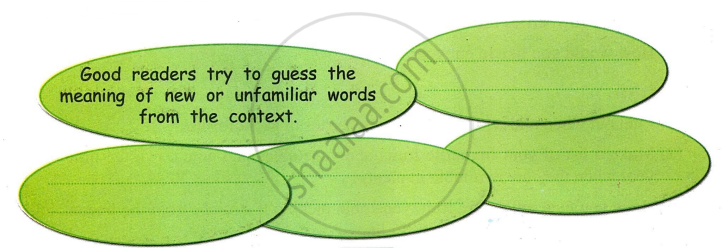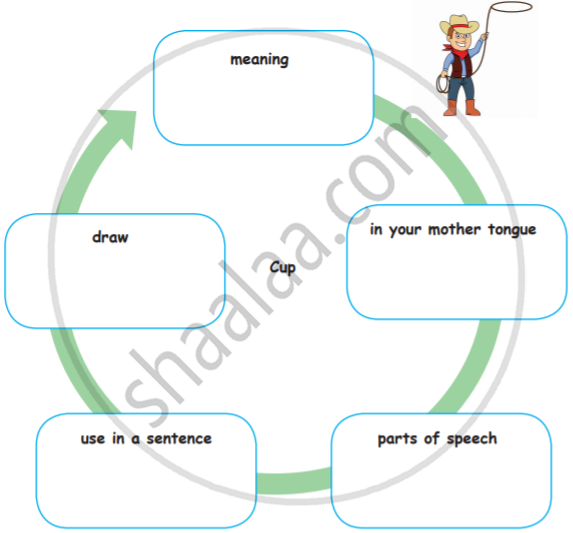Advertisements
Advertisements
Question
How does the connection drawn between the tail and the eyes add to the descriptive detail of the poem?
Solution
Sujata details the plumage of the peacock with finesse. The whole poem is a celebration of the beauty of the peacock. The vivid impressions on the feathers, the eyes of the peacock, are best seen when it fans its tail. The pattern actually resembles an eye, which she is appreciates immensely. The poet when tries to get a glimpse of the peacock, alert, it gathers its tail and eludes. Then the poet praises these eye impressions and calls that these violet fringed with golden amber, dark glowing eyes are always open, of course as they can not have eyelids. The poet calls them the 'eyes of the peacock'. She describes them violet fringed with golden amber. The shaking of the feathers is compared to the blinking of eyes like the eyes on the feathers will not blink any other way but by the shaking of the feathers.
APPEARS IN
RELATED QUESTIONS
Read the following passage and do the activities:
B1 Match:
Match the areas given in Column ‘A’ with the description of Mehendi design given in Column ‘B’:
| 'A' | 'B" | ||
| (i) | North African | (a) | A mix of Indo-Pakistani and Arabic design |
| (ii) | Indian | (b) | Delicate loops and curves, paisleys, teardrops |
| (iii) | Arabic | (c) | Geometrical images |
| (iv) | South Asian | (d) | Local textiles, paintings, and architecture |
Henna comes from the leaves of the plant Lawsonia inertias. The plant grows in hot and dry climes and is native to North Africa, the Indian subcontinent and the Middle East. The leaves of the plant are dried and crushed to powder. Various additives such as coffee decoction, tea, lime juice, Mehendi and eucalyptus oil are mixed with the henna powder to increase the potency of the dry, this also helps to bind the powder to a paste-like consistency. The mixture is applied through cones in intricate patterns depending on the region of use.
Album of Patterns
Four major styles can be found in the vast dictionary of Mehendi designs. Earlier the application was restricted to hand and feet, but the adoption of Mehendi by different cultures throughout the world has seen experimentation on different body parts including the neck naval and back.
North African patterns rely on geometrical images to trace the shape of hands and feet, Arabic designs borrow heavily from local textiles, paintings, and architecture. These are more spaced out, to allow the design to stand out boldly from the skin parts left untouched by henna. The Indian style comprises of delicate loops and curves, paisleys, teardrops and flowers that give a dainty filigreed glow-like effect. Though intricate patterning is the name of the game today, this trend took off in India only during the 20th century. The patterns preferred by the South Asian countries are mixed with Indo-Pakistani and Arabic design schemes. Chinese and Celtic symbols now find a place in the vast repertoire of Mehendi designs as well.
B2 Complete:
Complete the following and write:
(i) The procedure before applying henna _______
(ii) The reasons for using additives _______
(iii) The suitable climatic conditions for the henna plant _______
(iv) Mehendi is used on _______
B3 Find words:
Look at the following description and find out proper words from the passage and write:
(i) Existing naturally in the place : - n _______
(ii) Consist of something: - c _______
(iii) Delicate decoration made from gold, silver and copper wire: - f _______
(iv) Substance that is added in small quantity : - a _______
B4 Language study:
Fill in the blanks with suitable subordinators given in the box:
| as well as, so that, however, which |
(i) The mixture is applied through cones in intricate patterns _______ depend on the region of use.
(ii) The intricate pattern is the name of the game of today _______, this trend took off in India, recently.
(iii) North African pattern relies on geometrical images ______ they can trace the shape of hands and feet.
(iv) The patterns preferred by the South Asian countries are mixed with Indo-Pakistani _______ Arabic design schemes.
B5 Personal Response:
Which Mehendi design do you like? Why?
Discuss the following statement in groups of two pairs, each pair in a group taking opposite points of view.
Why do you think Professor Gaitonde decided never to preside over meetings again?
What do you understand of Einstein’s nature from his conversations with his history teacher, his mathematics teacher and the head teacher?
Why do you think the poet has used so many 'negatives' to make his statement?
complete the following sentence.
Ajoy reported about ________________.
Pick out a word from the poem to complete the sentence meaningfully.
Handicapped people should never be ______. (ignored and avoided)
Does the traveller really have a magic stone?
Form groups. Discuss the first two paragraphs. Try to present their content in the form of a series of conversations among the volunteers and the villagers.
Write about how you take care of your books.
Form groups of five. Discuss how you can complete the rest of the story without referring to Part II of the story.
Write in your own words.
In which professions is a person forced to stay away from his home/ homeland for a long time? Try to guess why the poet is forced to stay away from his home?
Describe the following in one or two lines.
The nest.
What plans did the wife make?
What did Gopal Bhand want to tell the husband and wife?
Form groups. Discuss how one can be a 'good reader'. Use the points in the above passage in your discussion. Write down the points that show what makes a 'good reader'.

Name a few other things that people often count. (At least 5.)
Enact the play.
Read the following line from the poem and answer the question that follow.
In the dim past, nor holding back in fear From what the future veils; but with a whole And happy heart, that pays its toll To Youth and Age, and travels on with cheer.
- What does the poet mean by the phrase ‘in the dim past’?
- Is the poet afraid of future?
- How can one travel on with cheer?
Read the following line from the poem and answer the question that follow.
My heart will keep the courage of the quest And hope the road's last turn will be the best.
|
My heart will keep the courage of the quest, And hope the road's last turn will be the best. |
- What kind of quest does the poet seek here?
- What is the poet’s hope?
Gulliver managed to reach the land as he was______.
How should one react to adversity?
How do the wheels go?
What was the lesson learnt by Uthaman?
Choose the best answer.
The animals ______ the boat.
Why did Meena call the official 'Appa'? Do you think we need to be a family to care for others?
Find and write the clues.
Clue for blind eye ______
Find and write the clues.
Clue for the load on the camel ______
Try your own.

Senthil bought a ______ from his savings.
Choose the word with same meaning.
Foot hills- ______
